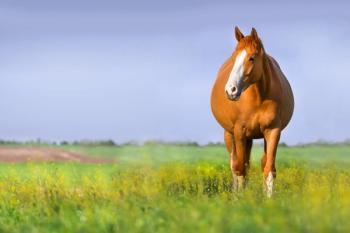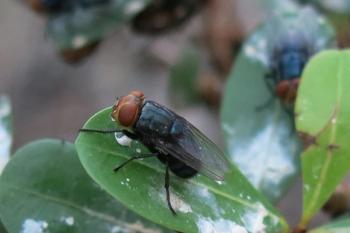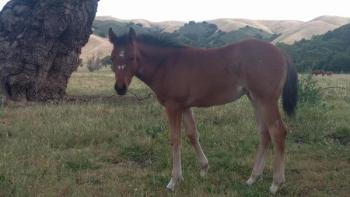
Caterpillar not off hook as MRLS bait
In May, the University of Kentucky (UK) released preliminary test results suggesting the eastern tent caterpillar and its waste remain chiefly responsible for increased foal losses in 2001, but the picture is "far from fully developed."
In May, the University of Kentucky (UK) released preliminary test results suggesting the eastern tent caterpillar and its waste remain chiefly responsible for increased foal losses in 2001, but the picture is "far from fully developed."
The results are "an encouraging sign," says Dr. Nancy Cox,associate dean of research at UK's College of Agriculture.
"Certainly the results do point to the caterpillars' role in thecause of Mare Reproductive Loss Syndrome (MRLS), because the mares thatdid lose their pregnancies in our (latest) experiment had symptoms similarto MRLS observed last year," she says.
The UK College of Agriculture's Departments of Entomology, VeterinaryScience and the Livestock Disease Diagnostic Center collaborated on thisproject to officially rule "in" or "out" the caterpillar.
Last year, the UK Gluck Equine Research Center conducted a survey offarms, which demonstrated a link between the presence of eastern tent caterpillarsand the incidence of MRLS. As a follow-up, the new project is designed todefinitively say whether the association is a correlation or if caterpillarswere causally associated. At presstime, the trial was near completion.
Three test groups
The experiment divided 29 pregnant mares into three groups. The firstgroup was exposed for six hours daily to increasingly high levels of easterntent caterpillars and their frass. The group was moved to a plot where 10,000caterpillars were dispersed.
"There's no place in the world that would naturally have that manycaterpillars concentrated in one area with those kind of exposure levels,"explains Bruce Webb, Ph.D., entomologist and lead investigator of the latesttrial.
The second group was exposed only to the insect's frass. Lastly the thirdset, the control group, received as little exposure to caterpillar larvaeand frass as possible.
In the treatment with caterpillars and frass, six of 10 mares lost foals.The second treatment with only frass resulted in six of nine mares losingfoals. In the control group, three of 10 lost foals.
Interpretation of results
Researchers at UK say such numbers are not "statistically significant"and the project is only another step forward.
"We will have to repeat that experiment and get results that arestatistically significant," says Cox. "In the research we did,three in our control group lost their pregnancies. We would have expectedthat none of those would. The reason we think they did is because some caterpillarsescaped from our other treatments."
Although the results are not statistically sound, they are moving scientistsin a more conclusive direction.
"There's a strong tendency that leads us to expect they are causallyassociated, but we would not be able to say that unequivocally at this time,"says Cox.
Will the case of MRLS ever be definitively solved?
"I don't know if scientists will ever say anything is final, orelse they'd be out of a job," says Webb. "I will say that theresults show that the data weighs more heavily that caterpillars were aprimary factor. More trials will most likely be conducted."
In the meantime, the university does not plan to use these preliminaryresults in any way to be a predictor of the extent of MRLS that may be onfarms this year.
Lingering theories
While the latest caterpillar results show promise, other theories arestill not entirely fleshed out, says Cox.
"Certainly caterpillars are the frontrunner of our causes rightnow. But we're still looking at cyanide and cyanide-like compounds, someanti-estrogen causing agents.
"Scientists at UK are still considering that the caterpillars' frassor excrement or grass or fungi might be producing an anti-estrogen compound."
The caterpillars or the insects in combination with the soil, grass,weather and fungi may yield a substance that caused termination of the pregnancy.
As for the theory that horses ingested toxic cyanide by eating caterpillars,the theory has yet to be proven in the laboratory, according to Cox. Thecyanide, apparently, is depleted shortly after caterpillars ingest the substance.
"But, laboratories are different from the great outdoors, we'd haveto confirm our evidence in an outdoor experiment," she says.
Hemlock also didn't make the UK list of pet theories, although Cox saysit continues to be investigated at Clemson University.
For now, the goal: to be able to answer by year-end, "Caterpillars?Yes or no," says Cox. That would be the beginning of a new chapterof MRLS investigation.
Newsletter
From exam room tips to practice management insights, get trusted veterinary news delivered straight to your inbox—subscribe to dvm360.






